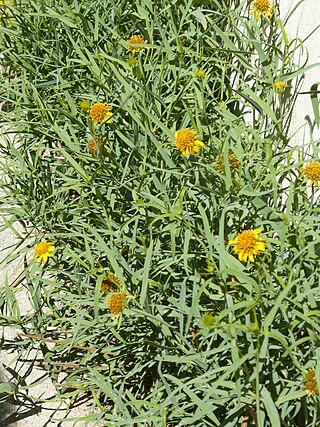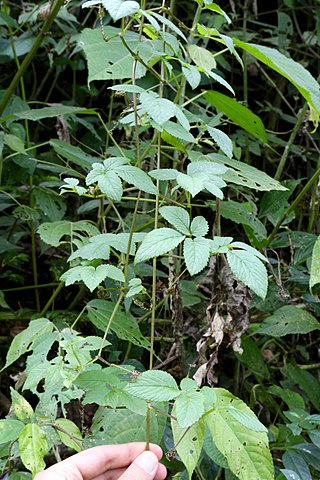
Regnellidium is a monotypic genus of ferns of family Marsileaceae.

Pascalia is genus of flowering plants belonging to the family Asteraceae.

Miersia is a plant genus in the Amaryllidaceae. The genus has 10 known species, 9 of which are endemic to Chile and one, M. rusbyi, endemic to Bolivia.
Hoehnea is a genus of plants in the family Lamiaceae, first described with this name in 1939. It is native to South America, primarily southern Brazil and Paraguay.
Miersiella is a monotypic genus of flowering plants in the Burmanniaceae, first described as a genus in 1903. It contains only one known species, Miersiella umbellataUrb. It is native to South America.
Parodiophyllochloa is a genus of Latin American plants in the grass family.

Ángel Gallardo was an Argentine civil engineer, natural scientist and politician. He served variously as the president of the National Council of Education, the Minister of Foreign Affairs and the Rector of the University of Buenos Aires. He was recognised for his scientific work both in Argentina and abroad.
Wilbrandia is a genus of flowering plants belonging to the family Cucurbitaceae. It is also in Tribe Coniandreae.

Tourrettia is a monotypic genus of flowering plants belonging to the family Bignoniaceae. It only contains one known species, Tourrettia lappacea(L'Hér.) Willd. The genus of Tourrettia has 2 known synonyms, DombeyaL'Hér. and MedicaCothen. It is also in Tribe Tourrettieae.
Lenzia is a monotypic genus of flowering plants belonging to the family Montiaceae. It only contains one known species, Lenzia chamaepitysPhil.
Monttea is a genus of flowering plants belonging to the family Plantaginaceae.
Neobaclea is a monotypic genus of flowering plants belonging to the family Malvaceae. It only contains one known species, Neobaclea crispifolia(Cav.) Krapov.
Pozoa is a genus of flowering plants belonging to the family Apiaceae.
Plenckia is a genus of flowering plants belonging to the family Celastraceae.
Pisoniella is a monotypic genus of flowering plants belonging to the family Nyctaginaceae. It only contains one known species, Pisoniella arborescens(Lag. & Rodr.) Standl.
Parodiodoxa is a genus of flowering plants belonging to the family Brassicaceae. It just contains one species, Parodiodoxa chionophila(Speg.) O.E.Schulz
Fonkia is a monotypic genus of flowering plants belonging to the family Plantaginaceae. The only species is Fonkia uliginosa.
Hunzikeria is a genus of flowering plants belonging to the family Solanaceae.
Lourtella is a monotypic genus of flowering plants belonging to the family Lythraceae. The only species is Lourtella resinosaS.A.Graham, Baas & Tobe.
Parodianthus is a genus of flowering plants belonging to the family Verbenaceae.




